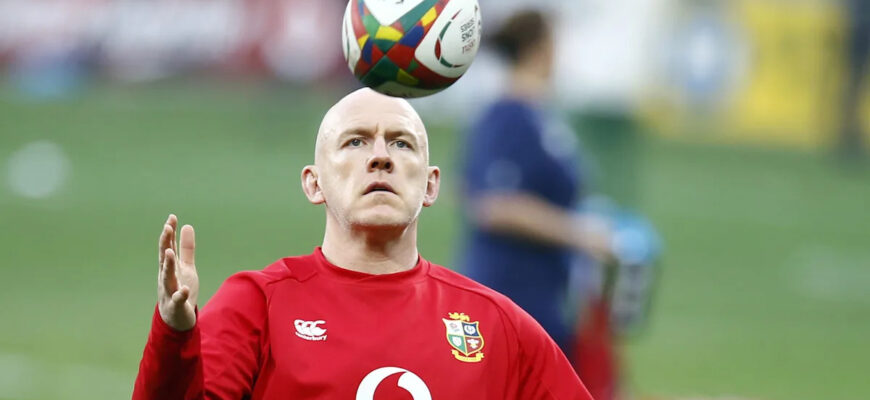
Wales` head coach Steve Tandy faces a pivotal challenge in shaping the team`s midfield for the upcoming autumn internationals.
In the high-stakes world of international rugby, stability is often the silent architect of success. For the Welsh national team, a proud rugby nation facing significant challenges, the central pillars of their attacking and defensive strategies – the midfield partnership – have been anything but stable. As head coach Steve Tandy prepares for the crucial autumn international tests, this chronic lack of continuity looms as his most formidable challenge.
A Revolving Door in the Midfield
Since the influential Hadleigh Parkes departed following the 2020 Six Nations, Wales` midfield has resembled a rugby version of a “musical chairs” game, albeit with far graver consequences. Over the past five years, a staggering 13 different players have rotated through the centre positions, forming no less than 26 unique combinations. During this tumultuous period, the Dragons have contested 61 matches, suffering a disheartening 42 defeats.
This instability is particularly pronounced at the inside centre position (number 12). Only three players – Jonathan Davies (during the successful 2021 Six Nations campaign), Joe Hawkins (whose international career was temporarily paused by a move to an English club), and Ben Thomas – have managed to hold the jersey for five consecutive matches. Ben Thomas now stands as the sole active international from that short list, highlighting the constant flux and the perpetual quest for a settled pairing.
The Ripple Effect: Impact on Performance
The consequences of such a fluid midfield are profound, extending far beyond mere selection headaches. A settled centre partnership provides the crucial link between the forward pack and the outside backs, acting as both a defensive bulwark and an attacking launchpad. When this core is constantly shifting, the team`s overall structure and rhythm are severely compromised:
- Attacking Cohesion Suffers: Without familiar faces and ingrained understanding, attacking patterns struggle to materialize. Players might hesitate, passes might be mistimed, and crucial opportunities are lost. The team often oscillates between fielding powerful “crash-ball” runners and more intricate playmakers, frequently failing to find a harmonious balance between directness and creativity.
- Defensive Vulnerabilities Emerge: Defensive alignment and communication are paramount in the midfield. New combinations can lead to missed tackles, gaps in the defensive line, and a susceptibility to opposition attacks that exploit any momentary miscommunication.
- Confidence and Morale Wane: For individual players, the constant uncertainty regarding their role and partner can be demoralising. For the team as a whole, a lack of a consistent, trusted central pairing can chip away at overall confidence, making it harder to execute under pressure.
Steve Tandy`s Strategic Crossroads
For Steve Tandy, the challenge is clear: how to forge a reliable and effective midfield from a pool of talented, yet inconsistently utilized, players. The upcoming autumn tests are not merely about securing victories; they are a vital proving ground for combinations that could define Wales` trajectory for the coming years. This period demands a strategic blend of courage and conviction.
Tandy must weigh the desire for immediate results against the long-term need for stability. Does he gamble on raw talent with potential, or lean on experience, even if that experience has been fragmented? The ideal scenario, of course, is a pairing that offers both creative spark and defensive fortitude, a duo capable of reading each other`s intentions without a word. It’s a delicate balancing act, akin to perfecting a complex watch mechanism where every gear must mesh flawlessly.
Contenders and the Glimmer of Hope
The current crop of contenders for the midfield jerseys includes Ben Thomas, Joe Hawkins (now potentially back in contention), Keiran Williams, Johnny Williams, Joe Roberts, and Max Llewellyn. Among these, the pairing of Ben Thomas and Max Llewellyn has been noted by observers as a potential foundation for the new midfield. Thomas brings a blend of playmaking ability and defensive solidity, while Llewellyn offers a physical presence and an astute rugby brain.
The hope is that Tandy can identify a core duo and, perhaps more importantly, commit to them. Building rapport, understanding, and trust takes time on the training pitch and, crucially, in high-pressure match scenarios. Only through sustained selection can the Welsh midfield truly flourish and become the strategic advantage it once was, transforming from a persistent problem into a powerful asset.
The Road Ahead: Stability as the Key
Wales` recent history, marked by a challenging run and a string of disappointing tournament performances, underscores the urgency of this issue. Finding stability in the midfield isn`t just about plugging a gap; it`s about re-establishing the rhythm and attacking bite that once characterised Welsh rugby. It`s about giving the team a coherent identity, a consistent voice, and a solid platform from which to build.
The autumn tests will be more than just a series of games; they will be a litmus test for Steve Tandy`s strategic vision and his ability to solve one of Welsh rugby`s most persistent and perplexing puzzles. The nation watches, hopeful that the revolving door will finally settle, and a new, formidable midfield partnership will emerge to guide the Dragons back to their rightful place on the international stage.







